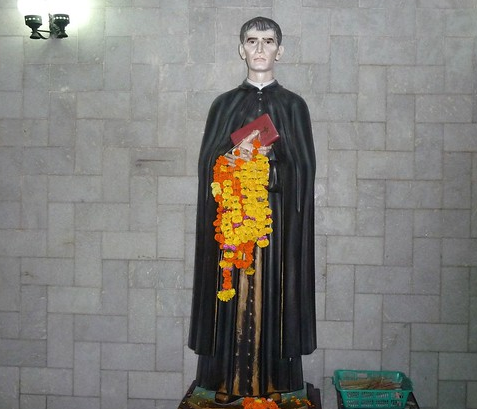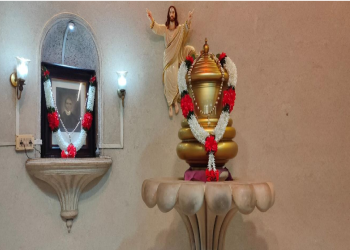The Life of Venerable Father Agnelo D’Souza
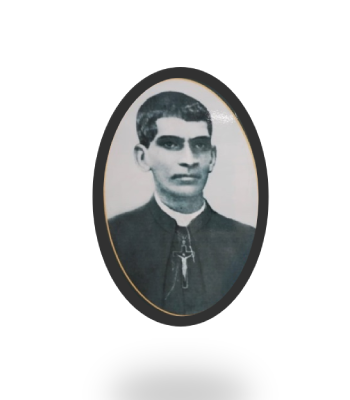
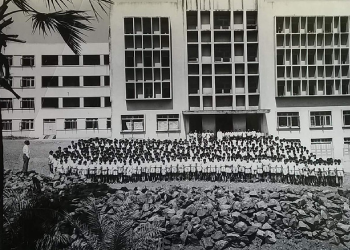
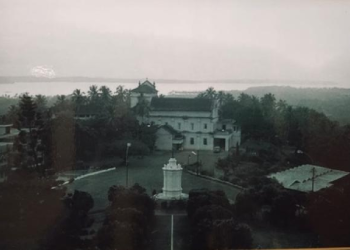
Birth: Fr. Agnelo D’Souza was born in Anjuna, Goa on 21st January, 1869. His parents were devout and religious minded people, imbued with a true Christian spirit.
Call: He completed his studies in Philosophy and Theology at Patriarchal Seminary of Rachol, Goa.
Pilar Missionary: On 17th July, 1897, he joined the diocesan Society of the Missionaries of St. Francis Xavier, Pilar, Goa.
On 24th September, 1898, he was ordained and worked as a true shepherd of souls, at Shiroda and Sanvordem (Goa) and Kumta (Karwar). Fr. Agnelo, in his humble and unobtrusive manner, acquitted himself to the best of his abilities as a priest, preacher, confessor and administrator, in Goa.
Spirituality: Fr. Agnelo was a deeply spiritual man. A man of interior silence, he used to spend hours in prayer before the Blessed Sacrament.
Holy Death: He had a very holy death on 20th November, 1927. It was on the vespers of the feast of the Sacred Heart of Jesus and Fr. Agnelo was the preacher. Towards the end of the sermon, he collapsed on the pulpit. At his funeral, the then parish priest commented, “I have just laid a saint to rest”.
About Ven. Fr. Agnel
Life Of Fr. Agnel
➤ Characteristically, he grew up manifesting qualities of gentleness, love, purity, humility and obedience, combined with a strong sense of self-discipline. He was not given to much of talking, unlike the boys of his age, and usually preferred silence and prayer. Teaching catechism to the boys was his favourite childhood hobby. One of his uncles, Fr. Lazaro Fortunato Souza, seeing his teaching activities, uttered these prophetic words: “Agnelo will one day be a virtuous priest and a renowned preacher.”
➤ Both these prophecies came true, for during his studies for the priesthood, he proved to be brilliant and Godly and never missed the daily Mass at the Seminary of Rachol where he completed his discourse of theology with distinctions.
➤ Fr. Agnelo had set his sights high in the service of God and aimed at cultivating assiduously all the priestly virtues.
➤ He believed he could do better in a Religious Order and after much prayer and consultation with his colleagues and teachers, he made his first profession as a member of the Society of Missionaries of St. Francis Xavier, Pilar.
➤ On 24th September, 1899, the then Patriarch Archbishop of Goa, Dom Antonio Sebastiao Valente, ordained him a priest at the Cathedral of Old Goa, and celebrated his first Holy Mass at the Monastery of Pilar. From then on, Fr. Agnelo’s spiritual life can be studied under two phases.
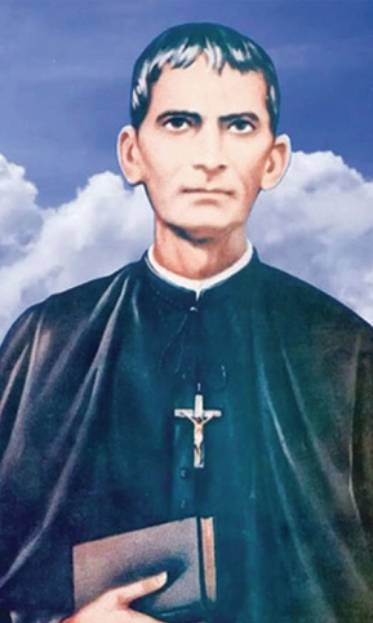
Born in Anjuna on 21st January, 1869, the sixth child of Miguel Arcanjo Mariano de Souza, and Maria Sinforosa Perpetua Magalhaes, who were blessed with eight boys and a girl, little Agnelo was christened after St. Agnes on her feast day.
The first consisted of ten years he spent at Pilar, more or less in seclusion, prayer, meditation and occasionally going out on pastoral work at the request of his superiors.
It was a preparation par excellence for his later apostolate as a Pastor, Confessor, Preacher, and Spiritual Guide.
He was appointed on 8th September, 1908, as Confessor to the Seminarians in Rachol and by the influence of his personal life of austerity, holiness and benevolence, he strengthened the Vocation of many a young penitent.
From 1910 to 1917, he served as Missionary Vicar of Shiroada in Goa, and of Kumta, now in Karnataka, and thereafter at Sanvordem as Curate
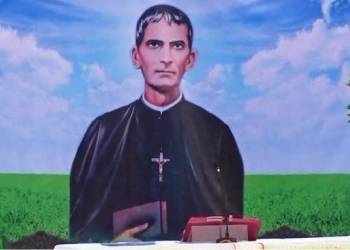
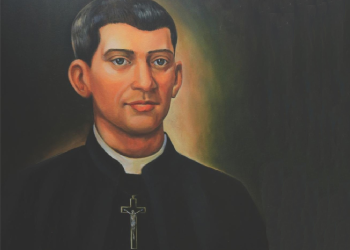
He left in all these places a memorable legacy of his holy living and pastoral concern. He had an intense devotion to the Blessed Sacrament and spent a few hours each night in adoration.
Fr. Agnelo was also an impressive preacher not because of any flourish of the rhetoric but because every word he spoke from the pulpit, came out from the depths of his heart.
On 15th April, 1920, he was confirmed as Spiritual Director of the Seminary as well as Director of the Apostleship of Prayer.
Fr. Agnelo was also an impressive preacher not because of any flourish of the rhetoric but because every word he spoke from the pulpit, came out from the depths of his heart.
Though not of robust health, Fr. Agnelo undertook to preach the whole novena for the Sacred Feast in November 1927 at Rachol. At the Vespers for the feast on November 19, Fr. Agnelo mounted the pulpit for the last time. His congregation missed the usual fire in his eloquence, and the voice itself turned faint. He ended the sermon earlier than other days and as he knelt in the pulpit for a final thanksgiving prayer, he lost his balance and had to be carried away.
But he was still conscious and desired to be laid on a bench in the corridor from where he received the Benediction of the Blessed Sacrament that followed the end of the Vespers. Fr. Agnelo had suffered a coronary thrombosis with paralysis of the left arm and leg. He received the last rites and then lapsed into a coma. He had often desired to die on the feast of the Sacred Heart, and the Lord heard his prayer.
On the following day, the funeral was largely attended by people from all corners of Goa eager to pay their last tribute to a saintly priest.
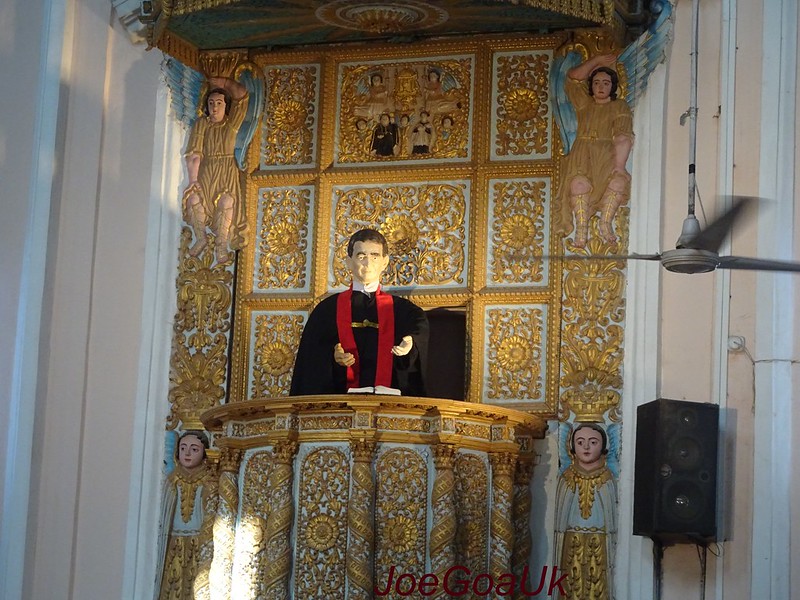
The Cause for the Beatification of Fr. Agnelo
The sanctity of Fr. Agnelo’s life rapidly spread all over Goa and beyond, and drew many pilgrims to visit his grave, seeking cures and extraordinary favours. The Patriarch-Archbishop of Goa at the time, Dom Teotonio Viera de Castro, on seeing one day a crowd of pilgrims at the grave, remarked: “Our Fr. Agnelo is already a Venerable”. The Goa clergy and laity sent petitions to the Patriarch to start the process of his beatification.
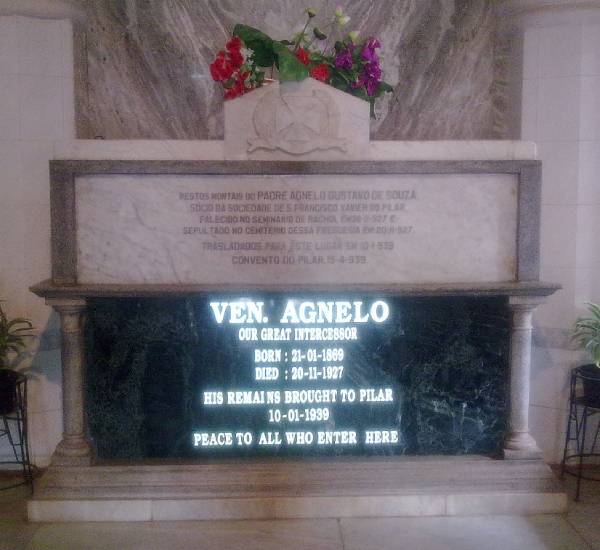
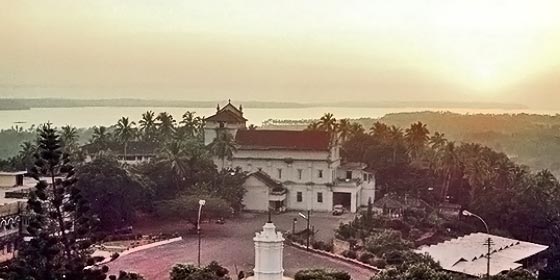
The Diocesan and Pilar Society authorities decided to exhume his remains secretly, on 10th January, 1939, and at odd hours in order to avoid a public spectacle, and to transfer them to the Pilar Monastery. In spite of all the care taken, even by changing the normal route from Rachol to Pilar (over 25 kilometres), thousands of people already flocked around the cemetery of Rachol and all along the route till Pilar.
When the coffin carrying the remains had crossed the river Zuari, five music bands were already in attendance, waiting at Agasaim to welcome solemnly the remains. The crowds were so great that the procession could hardly advance and the village headmen vied with one another to have the privilege of shouldering the coffin to carry it to the Pilar hillock where the remains found their permanent resting place.
From that day onwards, thousands of people from all walks of life, irrespective of race, sex or creed, began to track the then over hundred steep and narrow steps to Pilar Monastery, sometimes even on knees, to seek favours or thank Fr. Agnelo for his intercession
